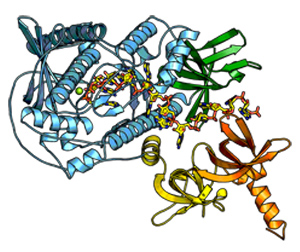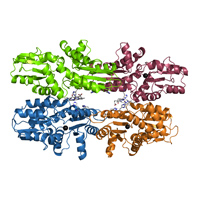
Research
The main goal of the Structural Genomics Group is to study proteins involved in DNA repair and protection, oxidative stress resistance, and hydrogen sulfide metabolism. The target proteins under study originate from prokaryotic and eukaryotic (unicellular to human) organisms. The research strategy aims at gaining a deeper understanding of microbial-to-human physiology and exploring the biotechnological and pharmacological potential of the studied protein targets.
The DNA repair studies aims to improve the current understanding of molecular mechanisms underlying Base Excision Repair (BER). A majority of our model enzymes are isolated from extremophiles and pathogens (e.g. D. radiodurans and A. salmonicida). Thus another goal is to reveal the organisms’ ability to maintain their genomes upon exposure to extreme environments like high doses of ionising radiation and ROS attacks by host organisms. Furthermore we are studying enzymes of marine origin with potential for commercial exploitation.
We are also interested in understanding how prokaryotic organisms deal with oxidative stress. Currently, we are studying the molecular mechanisms associated with non-enzymatic systems involving small complexes of manganese-phosphate in radiation resistant bacteria but also enzymatic systems involved in the detoxification of reactive oxygen species and reduction of oxygen or nitric oxide. Our focus has been on proteins which protect DNA under stress conditions (Dps), rubrerythrins and flavodiirons proteins. The aim is to unravel the molecular and structural mechanisms of the target proteins integrated at cellular level and correlate with the intracellular metal homeostasis.
The human enzymes involved in hydrogen sulfide (H2S) metabolism (biosynthesis and breakdown) are being studied from a functional and structural viewpoint. Complementary to a deeper understanding of these enzymes within human (patho)physiology, an active search for compounds (natural, synthetic and FDA-approved drugs) with potential to modulate their activity is underway, combining several biophysical and biochemical methodologies. Another research line focuses on unique enzymes involved in microbial bioenergetics and sulfur amino acid metabolism, as potential drug targets for the development of next-generation antimicrobial drugs.








